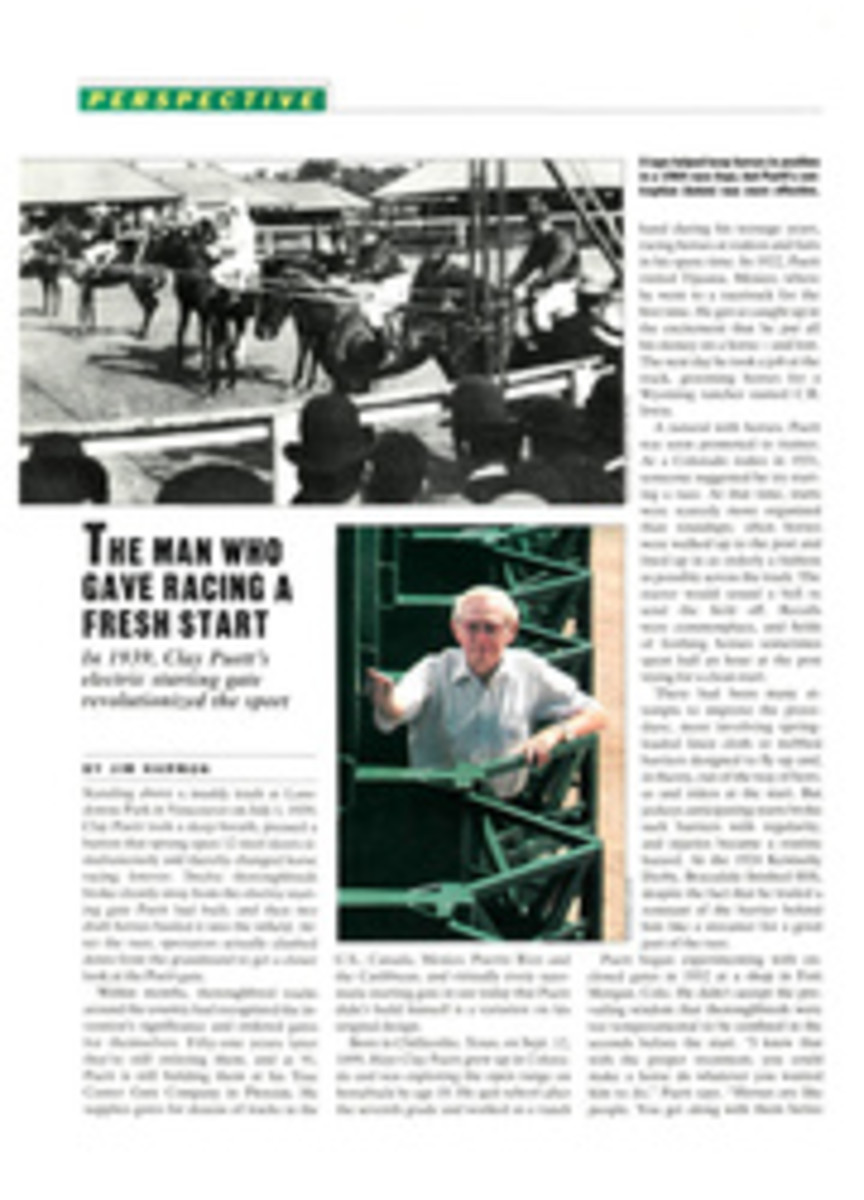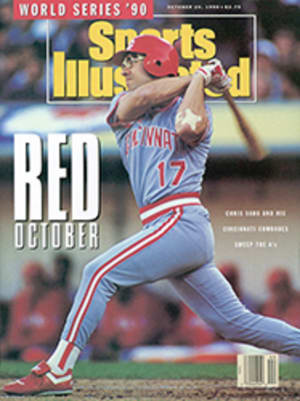
SNOOKER'S SAVVY SUPERNOVA
It's a sterling afternoon in Stirling, Scotland, an ancient burgh 30 miles northwest of Edinburgh. The temperature is 75°, and a light breeze is blowing off the Firth of Forth. Kids are kicking a soccer ball by the river. Everyone in Stirling should be outside on this fine day.
But not quite everyone is, it seems.
In Spencer's Snooker Club a single table is in use. A light illuminates one of the huge expanses of green, while 13 tables remain in the dark. Two 21-year-olds are playing snooker on this beautiful Friday afternoon. They've been here since 11, and they won't leave until five.
Look closely at the lanky kid in jeans and a black T-shirt. He's the one with the soft-rock haircut, the one whose stone-dust pallor indicates that he's a daily phantom of this snooker hall. The one who will make more than $2 million this year, doing what he's doing right now. Meet Stephen Hendry, 21, snooker's youngest world champion ever.
But first, meet Hendry's sport. Snooker, which to an American looks like a Brobdingnagian version of pool, was invented in India in 1875 by Neville Chamberlain, a young officer in the British army. He added six colored balls to the 15 red ones used in a game called pyramids. Each color is worth a certain number of points—two for a yellow ball, three for a green, all the way up to seven for a black. The colored balls must be sunk in sequence with the reds: Sink a red, sink a color, sink another red, sink another color. The colored balls are put back on the table until all 15 red balls have been sunk—or "potted"—and then the colored balls must be sunk again in numerical order. In Chamberlain's day, a first-year cadet at the Royal Military Academy was called a "snooker," and so was anyone who lost at the officer's new game.
Snooker was long considered a nocturnal and clubby gambler's game—a game for adults. Then in the early '80s, British TV discovered that a snooker table fit perfectly on a television screen. The sport boomed. According to Ted Lowe, a snooker commentator for the BBC, television "put the world championship equal to, if not above, Wimbledon or the Derby." British school kids suddenly idolized snooker sharps along with the usual run of pop stars and cricket players. Growing up in Edinburgh, Hendry himself followed the exploits of the tempestuous, cue-wielding Irishman Alex Higgins, a two-time world champion, as keenly as he did those of John McEnroe and soccer idol George Best.
When Hendry was 12, his father, Gordon, presented him with a child-sized snooker table as a present. "On Christmas Day my brother and I had a few games with him and beat him easily," remembers Gordon. "We left him to it for an hour or so, and when we played him again he whacked us both. I knew that he was going to be something special."
Stephen didn't take long fulfilling Dad's prophecy. At 13 he made his first century—a 100-point run off the break—and by 14 he was competing in adult tournaments throughout Britain. "I learned everything by watching television," says Hendry, who much preferred TV to, say, studying. "It came very easily, actually. I loved watching Jimmy White [who many say is the greatest player never to have won the world championship]. And, of course, I always respected Steve." Steve was—and is—Steve Davis, who won six world championships, from 1981 through '89.
At 16, Hendry became snooker's youngest professional. He signed with Ian Doyle, an entrepreneur who ran Spencer's and wanted to manage some players as well. According to Doyle, "When I took him on he was a lazy young sod." Doyle laid down the law: feet off the lobby tables, no slamming the cue stick, six hours of practice a day. When Hendry made immediate progress, Doyle took him to Frank Callan, a snooker guru who had helped Davis, among others. "I could do nothing for him," Callan recalls. "Hendry was the first player I had ever seen that I couldn't fault on cue action."
And it wasn't just cue action. It was also an eerie, supercool attitude. Hendry, his stick-banging behind him, had become the Borg of the green baize. He never smiled, never flinched. "For reasons I don't understand, I've always been relaxed at the table," says Hendry. "I put on the tuxedo, and it's like putting on overalls—they're my work clothes. Then I go to work. I'm relaxed. I do my job. I don't think about technique. I just pot the balls."
Hendry won 16 major titles by age 20, and late last year he passed the million-pound mark in career earnings. In December he trounced Davis 16 frames to 12 to win the U.K. Open. "A great standard of play," said Davis. "He's the most advanced competitor that I have come up against in my 10 years at the top."
Hendry sensed what was next. "Ever since I was a kid, I'd imagine that I was making a break to win the world championship. Now, no doubt, I was heading for that." At the end of April, in the suitably named Crucible Theatre in Sheffield, England, Hendry's inevitable ascension took place, although not precisely as Hendry had thought it would. The final opponent of his dreams had always been Davis, but Davis lost in the semifinals to White. "I wanted Davis," says Hendry. "And there was a bit of the poignant about playing Jimmy, since I'd idolized him. But, well, I had a job to do."
In the finals, both Hendry and White attacked boldly, attempting—and potting—shots they hadn't dared in the earlier rounds. Hendry concluded Saturday's play with a break of 108 and led 9-7 heading into Sunday's action. Needing a total of 18 frames to win, Hendry got to 13 quickly with breaks of 34, 66, 104, 58 and 81 as White potted only six balls in Sunday's first four frames. The two traded frames the rest of the way, and the young Scotsman cruised to the title, 18-12.
Hendry took home nearly a quarter of a million dollars. Doyle, who says candidly that "we're going to cash in," estimates that his client will earn well over a million pounds in prizes and endorsements this year. So far, Doyle, who gets 20% of Hendry's take, has bought himself a house and a $100,000 car. He now wears thousand-dollar suits and $500 crocodile shoes. Hendry himself is less ostentatious, but for a kid who left school at 15 and has trafficked in snooker currency ever since, money is one means of measuring how well he's doing in life.
Hendry feels he's doing fine. He talks about a time when he was winning tournaments at 14, 15 and 16, and wondering whether it was worth sacrificing his adolescence to become a snooker star. His father encouraged him to stick with the sport. "Your friends may be doing things now that you can't—having lots of girlfriends, driving cars and going to parties," said Gordon to his son. "But someday you'll make enough money to do things they can't."
Hendry recently moved into his own flat in South Queensferry, a trim village on the southern shore of the Firth of Forth, and he now drives a Mercedes 190. Very few of his mates have a place of their own or an expensive German car. "Dad turned out to be right," Hendry says, quite happily.
PHOTO
BOB MARTIN/ALLSPORT
Hendry's unwavering sangfroid makes him a sort of Borg of the baize.
PHOTO
PASCAL RONDEAU/ALLSPORT
Before Hendry's ascendancy, Davis (shooting) had been snooker's champ for six years.

